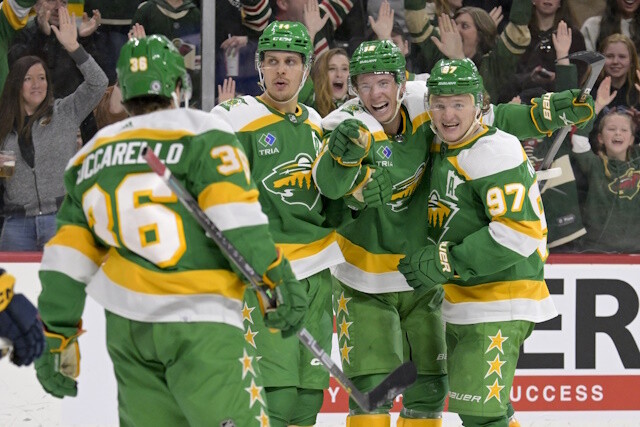One of the hot topics of the annual NHL general managers meetings was changing the format of 3-on-3 overtime.
After a day of debating on Monday, the NHL GMs decided it was best not to change how the game is played in the overtime session despite the constant regrouping.
Fixes To Three-On-Three NHL Overtime Should Not Be This Hard
However, the NHL noted that over 70 percent of the games this season end in 3-on-3 overtime. That is a record pace for overtime games in the NHL. That is better than going to the shootout since Regulation and Overtime Wins matter more than Shootout wins.
There was talk about adding a back-line pass similar to a backcourt violation in basketball to stop the constant regrouping and bring excitement back to the overtime session.
However, as Dallas Stars General Manager Jim Nill stated, that could get tricky, as there could be “unintended consequences.”
“All of a sudden, now I’ve got the puck at center ice, and you come and poke it,” Dallas Stars GM Jim Nill said to NHL.com. “Did it go over the line? Did it not go over the line? Do we have a video replay on that? It just opens up a can of worms.”
And he is right. It is bad enough that the coach’s challenge offside for millimeters, which was not the spirit of why it was brought in. It was more for the egregious offside plays. The same thing will happen here if there is a back-ice violation and the center-ice is the take-back line.
It gets too messy and complicated.
What about a shot clock in overtime? The NHL GMs did not think that was a good idea either.
“Now we’re going to have another clock?” Nill said to NHL.com. “It’s not worth it. And how would that work, anyway? Does the clock start once a team has possession? Once it has possession within the red line? The blue line? (Let’s not even get into how you define possession in this context.) Does the clock reset with a shot on goal? A shot attempt?”
Is this even hockey anymore? Nope. Neither is 3-on-3 overtime, but it is still a form of hockey. What was described above sounds more like basketball. What if a goal is scored late in overtime with no time left? What’s next, we know the puck has to cross the line before the clock hits zero, but does it become, did the puck get off the stick on time? When did it cross?
NHL News: Overtime format discussions to limit players circling back to their own zone
Again more questions than answers.
Could the NHL go back to changing sides and keeping the players closer to the bench? Maybe that is an option. Expanding the overtime session from five to seven minutes may work, too.
However, the top players already play most of the overtime session as it is. Most of the regrouping is for puck control and changing personnel. However, teams do not use their entire bench in overtime. So the same guys will just constantly jump over the boards.
But with the push to playoffs, the overtime sessions are becoming more exciting again. Points are more valuable and teams are starting to leave it all out on the ice. As we saw with the Minnesota Wild pulling their goalie against the Nashville Predators to get two points instead of one.
NHL Overtime in its current format of 3-on-3 is fine the way it is. It is exciting and entertaining. There does not need to be any adjustments at this point.


